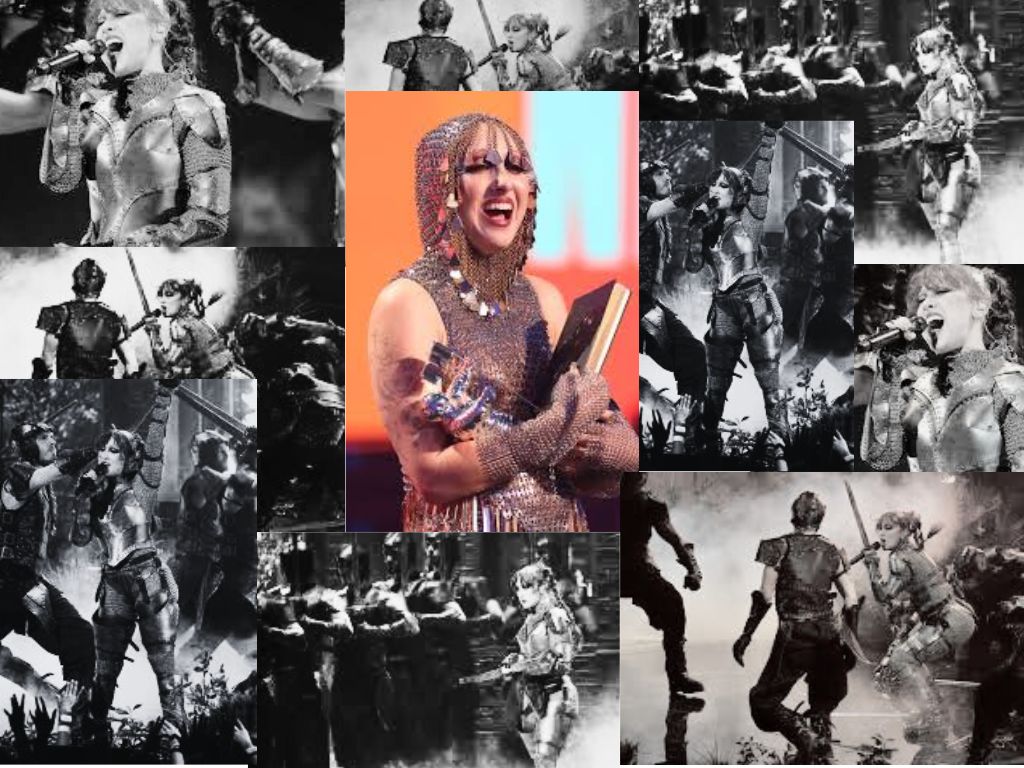Chappell Roan took the VMAs by storm with her fiery performance of her hit single “Good Luck, Babe!,” but there may have been a deeper meaning hidden within her performance.
The MTV Video Music Awards (VMAs) are a staple in the music industry and an important stepping stone for every new musician on the road to success. Considered to be more than just an award show, the VMAs continue to make a cultural impact as they reflect and influence overarching trends in music, fashion and entertainment.
While many deserving individuals won big at this year’s VMAs, none won more than pop star and queer icon Chappell Roan. Many have speculated that her performance of the hit single “Good Luck, Babe!” will be inducted into the VMA Hall of Fame alongside Madonna’s 1990 performance of “Vogue” and Lady Gaga’s 2009 performance of “Paparazzi.”
Roan arrived on the red carpet in a long black sheer dress and a sage green overcoat, mimicking classic medieval silhouettes while remaining contemporary. An imposing crucifix hung from her neck, thick metal cuffs encircled both of her wrists and she carried with her a full-size sword.
While those watching the red carpet in real time had no way of knowing it, Roan’s outfit was hinting at the overarching theme of her upcoming performance.
Donning a suit of armour and wielding a crossbow loaded with a flaming arrow, Roan appears at the beginning of her performance locked behind the large metal gates of a castle. Freed from her imprisonment, Roan departs from the castle before turning back and shooting her flaming arrow, setting the whole set ablaze.
While many people have theorized that Roan was alluding to the infamous story of Joan of Arc in her performance others have pointed to Julie d’Aubigny, a 17th century French opera singer, as a potential inspiration.
While little is known for certain about the life of Julie d’Aubigny, also known as Mademoiselle Maupin, the multiple tumultuous romantic relationships she supposedly shared with various women throughout her short lifetime have branded her as a historical queer icon.
While she was married to the Sieur de Maupin of Saint-Germain-en-Laye, d’Aubigny spent much of her life dressed in male clothing, triumphing over men in fencing competitions and wooing young women. Early in her life, d’Aubigny began a sapphic relationship with a young woman whose parents sent her away to a convent to keep the two away from one another. d’Aubigny entered the convent as a postulant, stole the body of a dead nun and placed it in the bed of her lover before setting the room on fire and escaping. Thinking she had successfully faked her lover’s death, the two maintained their affair for a few months. But the young woman d’Aubigny was involved with soon returned to her parents and d’Aubigny was charged in absentia — as a male — with kidnapping, body snatching and arson and was sentenced to death by burning.
While d’Aubigny did not die on the pyre and went on to have various other adventures, many viewers believe this narrative is the one Chappell Roan is referencing in her VMAs performance. The song Roan performed, “Good Luck, Babe!,” chronicles the singer’s heartbreak over a lover who refuses to accept that she could have feelings for another woman and instead chooses to repress her sexuality and force herself to pretend that she is attracted to men.
The story of Julie d’Aubigny and her young lover who eventually returns home to live a “normal” life as a wife and mother mirrors the narrative Roan spins in her hit single. Furthermore, the imagery of the massive crucifix the singer wore on the red carpet, the burning of what was first interpreted as a castle but could also be a convent, and her medieval armour all point to Julie d’Aubigny.
Still, some people online have suggested that the story Roan is portraying on stage does not seamlessly match that of Julie d’Aubigny. And considering the singer herself has not yet revealed who the performance was inspired by, there is no way to know for sure exactly what Roan was trying to suggest with the performance.
Yet Chappell Roan’s mere presence at the VMAs was still a huge win for queer folks all around the world, paving the way for the celebration and continued acceptance of queer media in the music industry.

